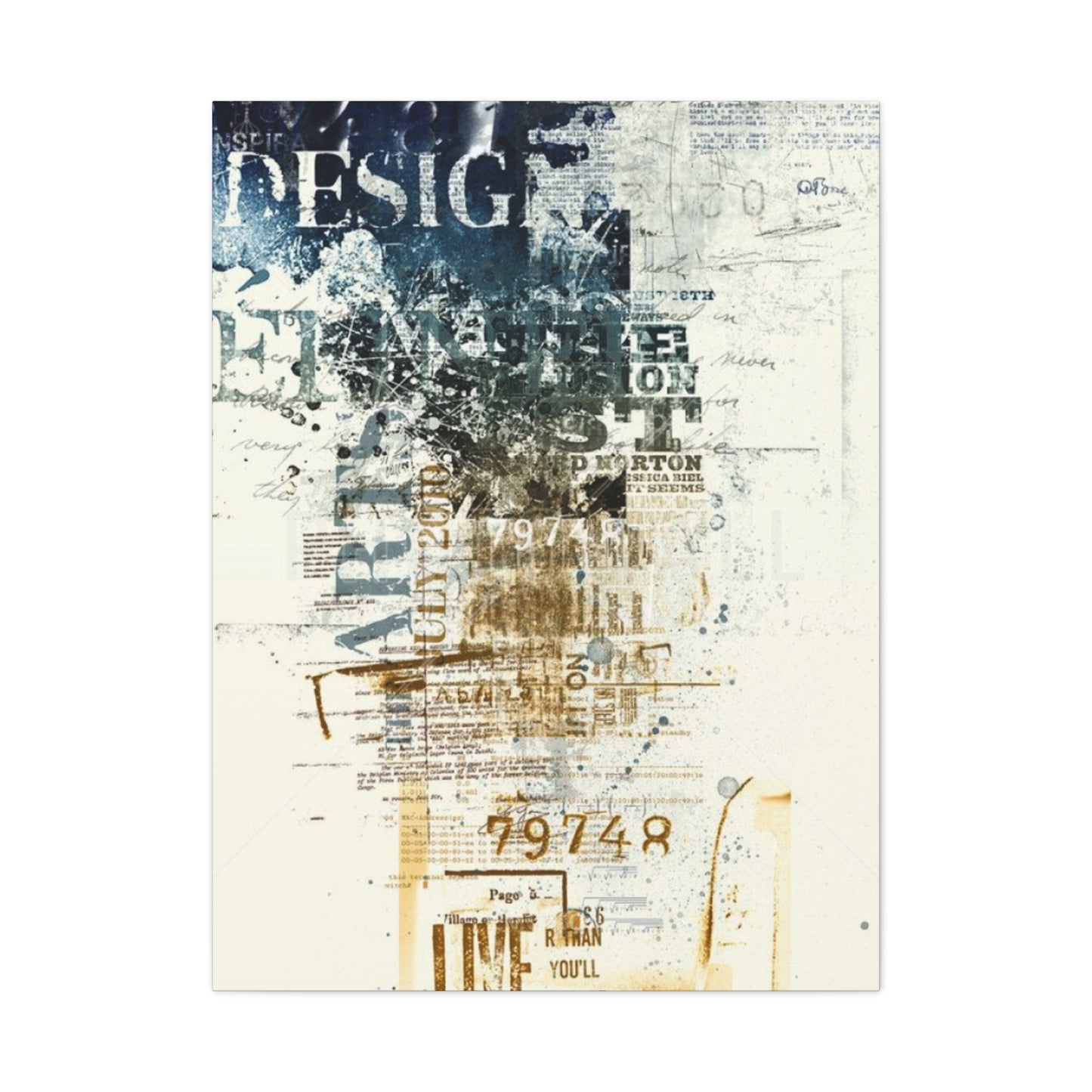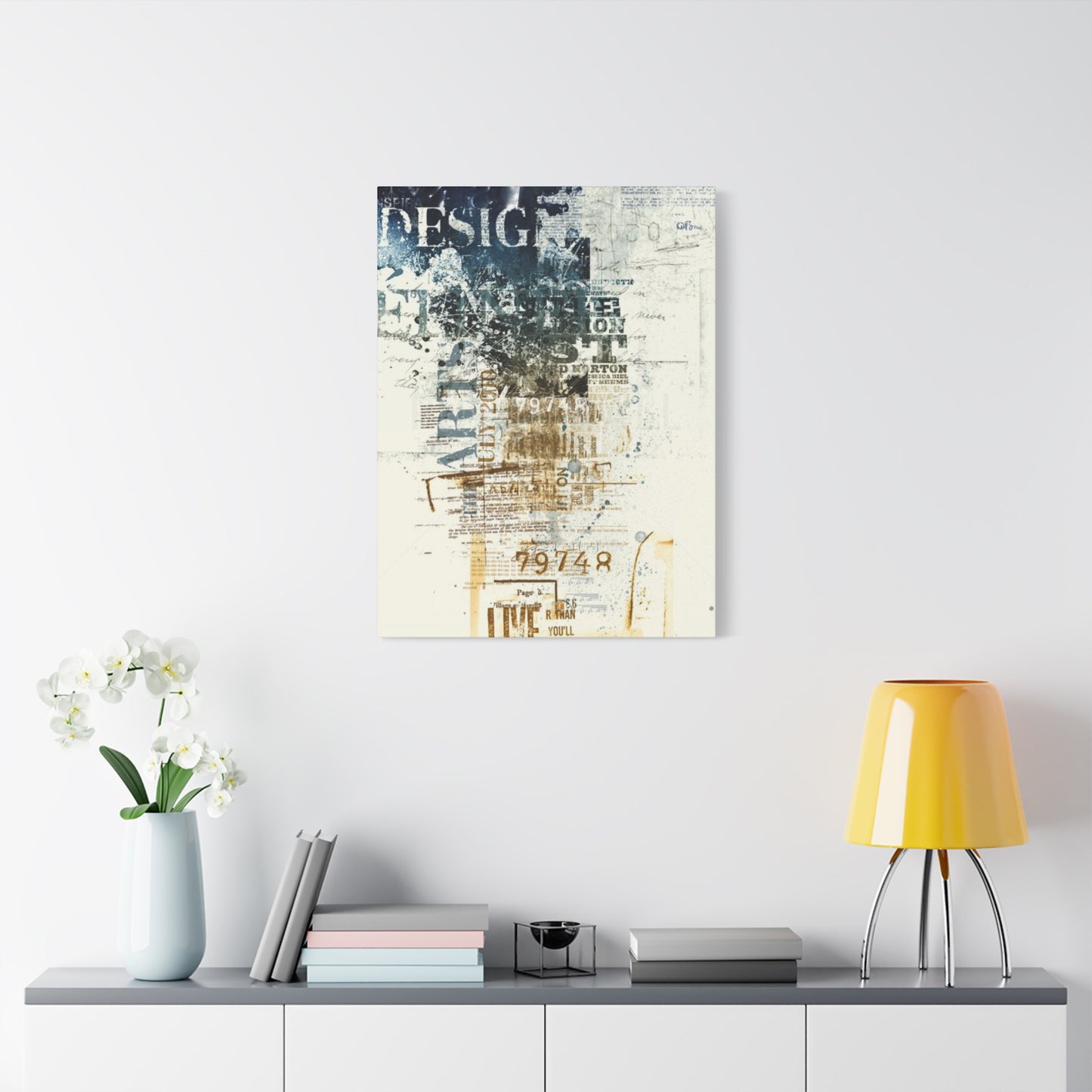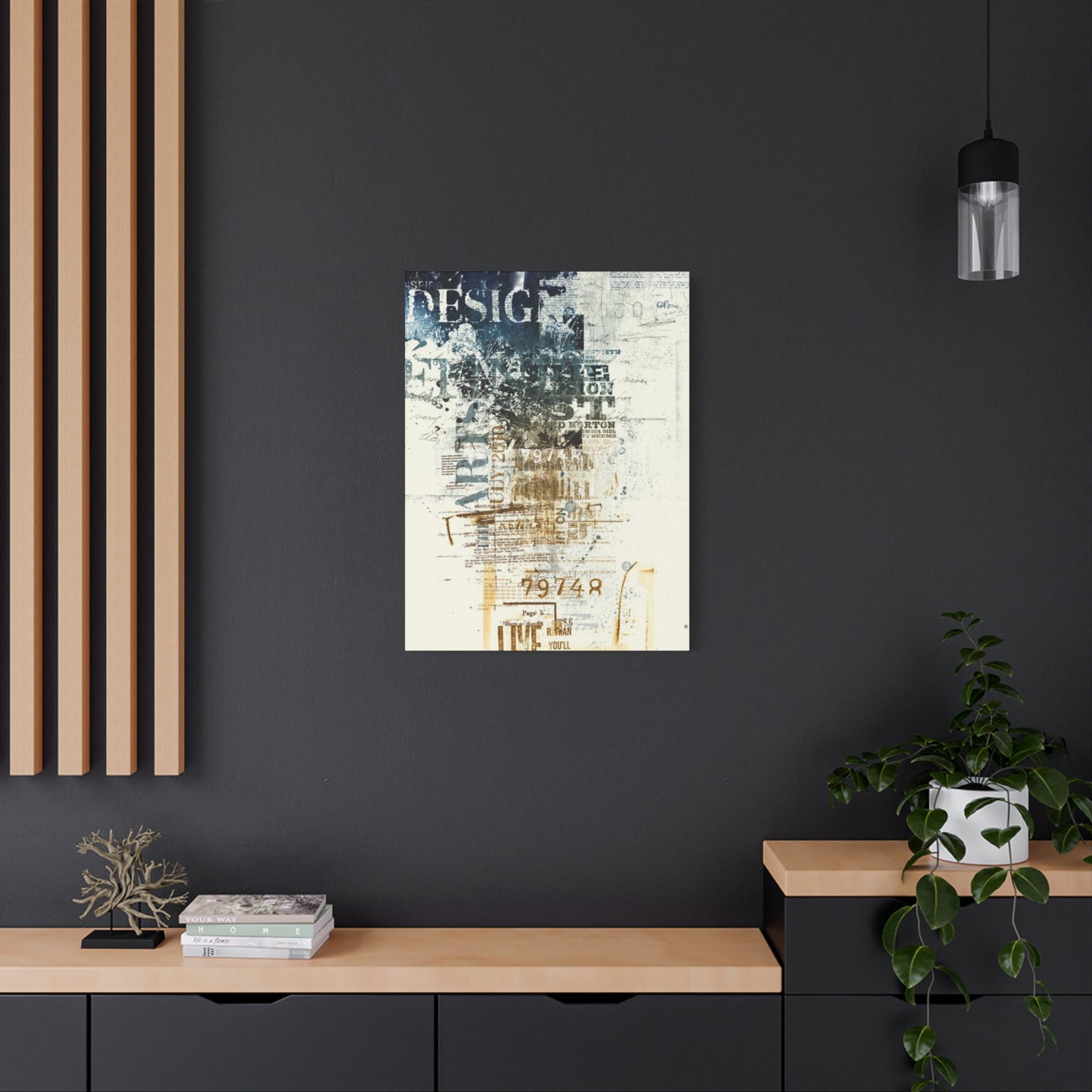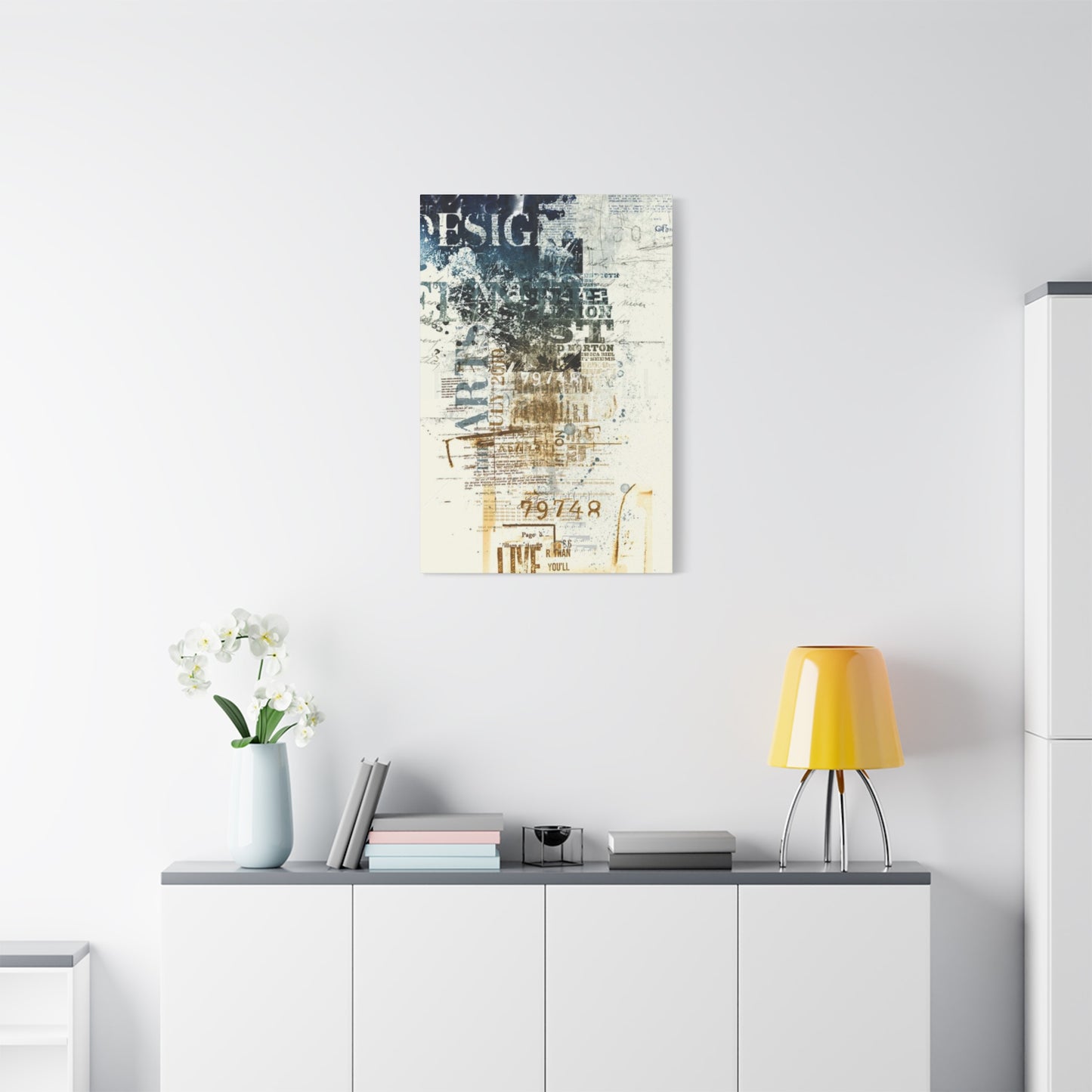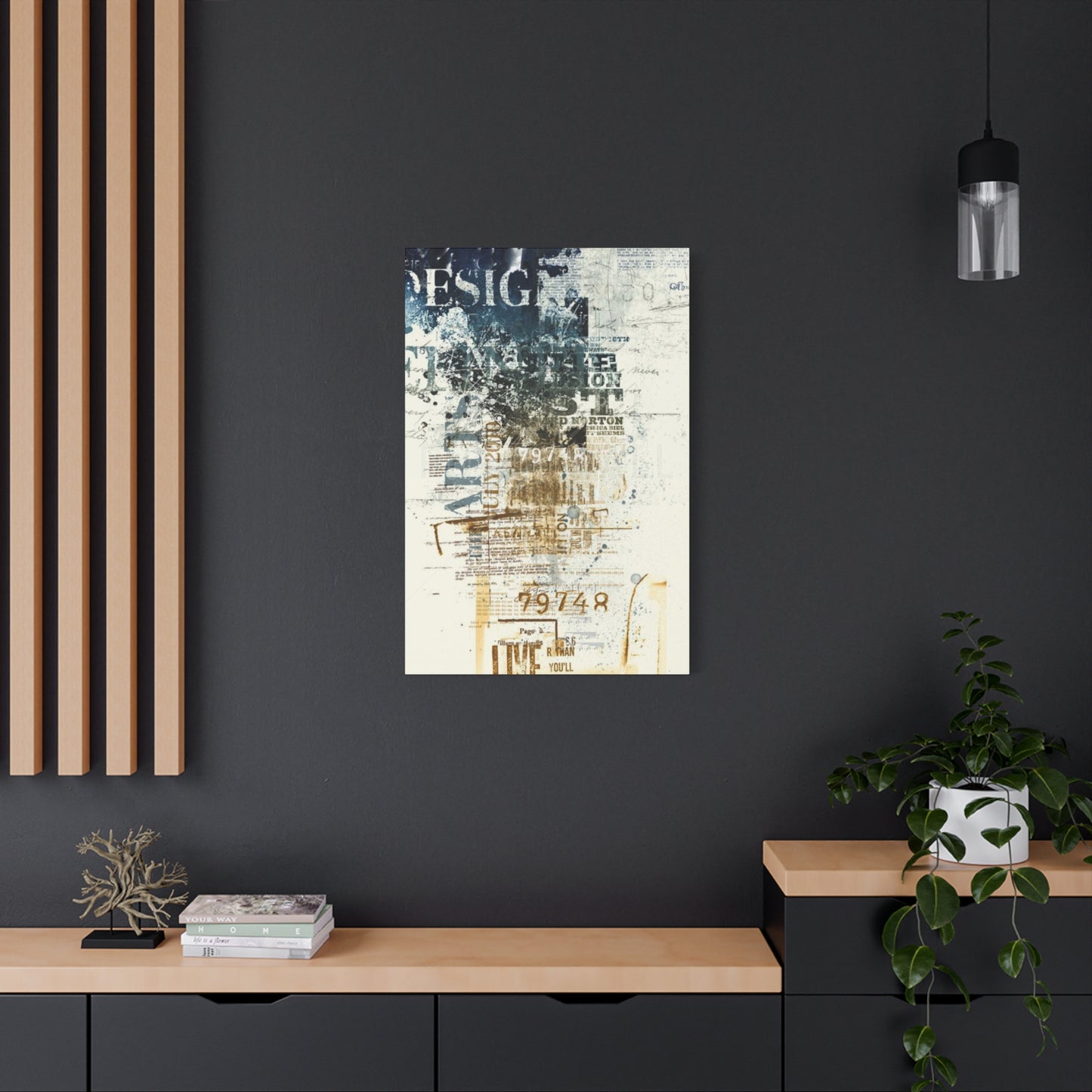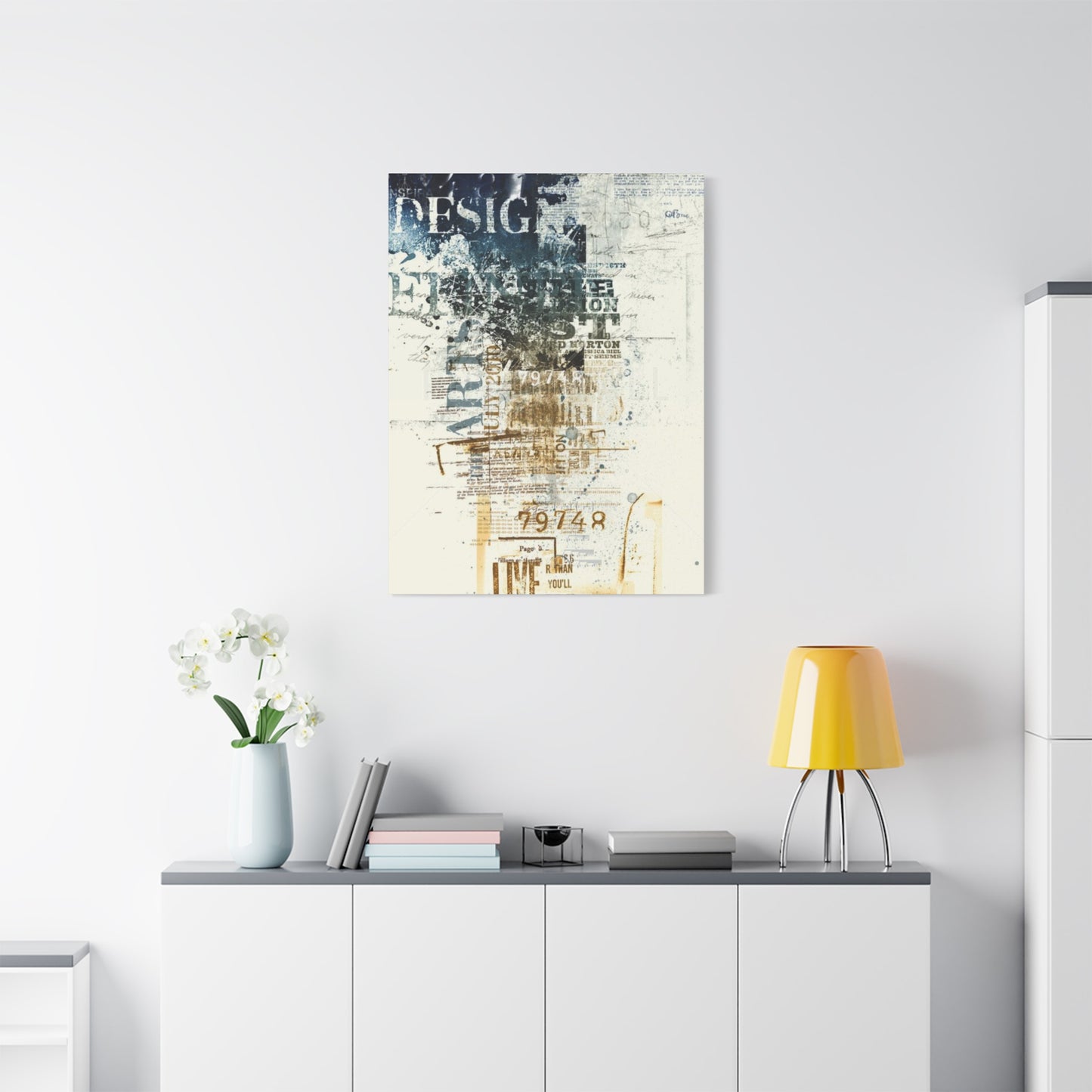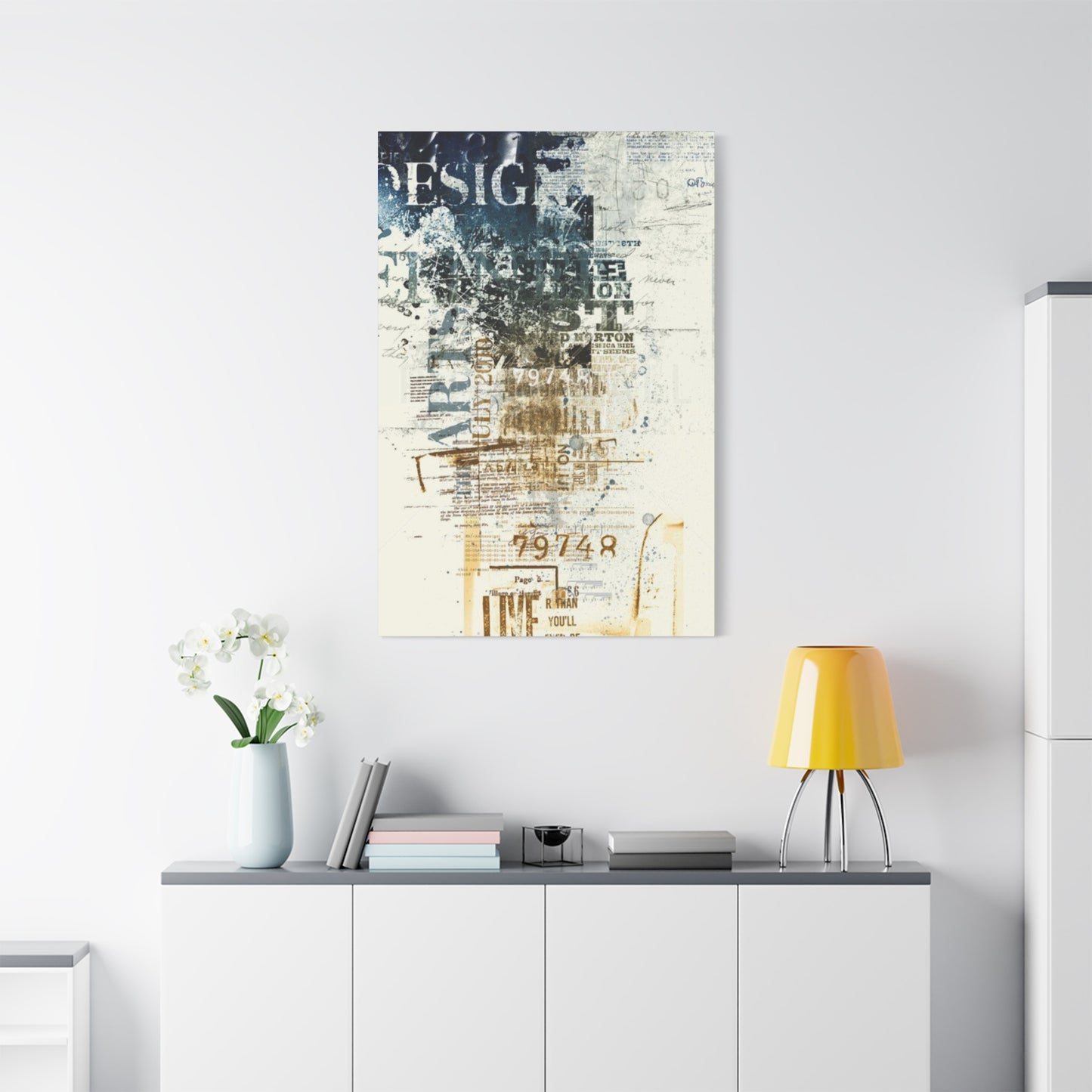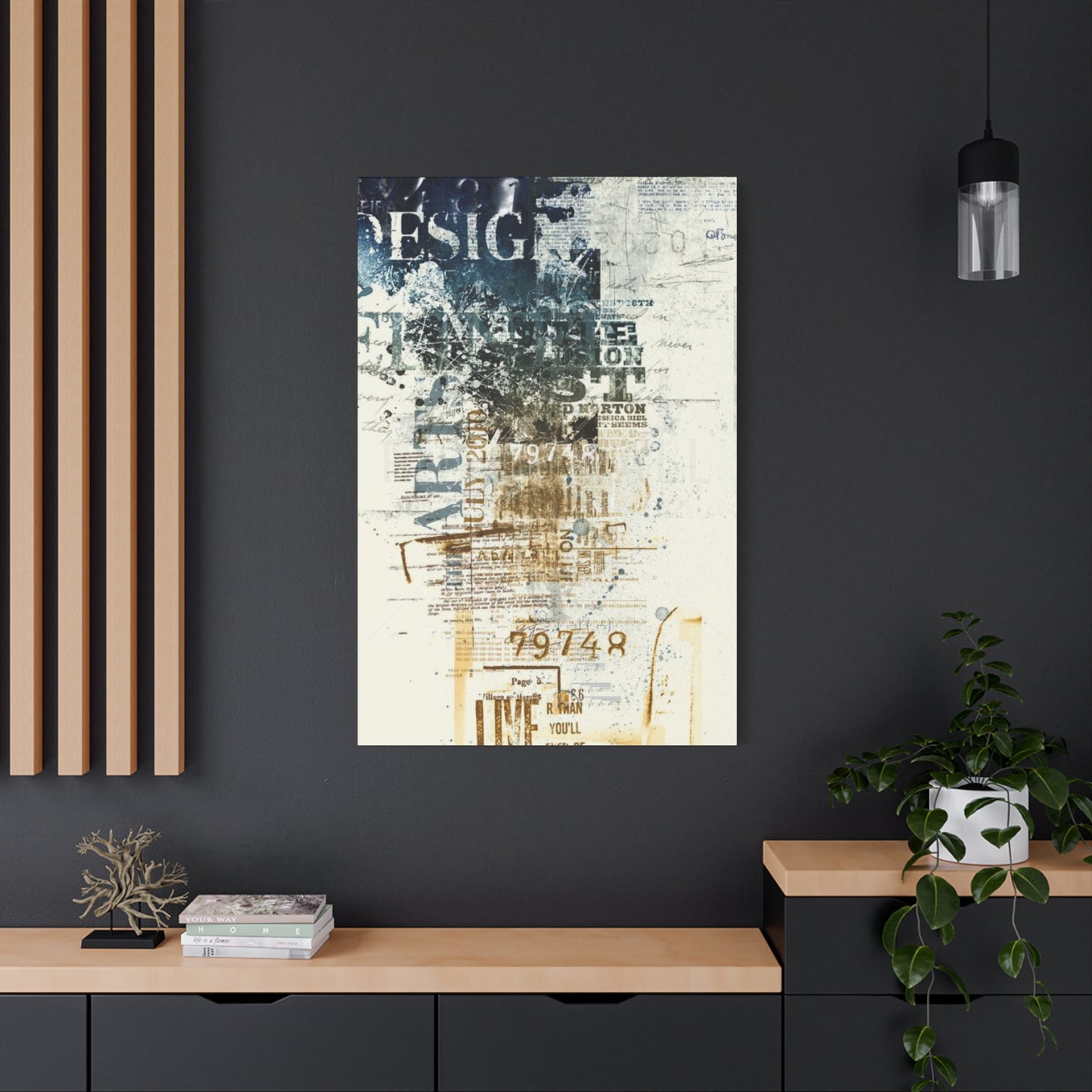Transforming Walls Into Canvases: The Power of Stickers, Paintings, and Mixed Media in Art
Wall decoration has evolved significantly over the past decades, transforming from simple picture frames to elaborate artistic expressions that define personal spaces. Today, homeowners and decorators have access to an unprecedented variety of options including stickers, painting techniques, mixed media creations, traditional wall art, and canvas prints. Each method offers unique advantages and creative possibilities that can turn any bland wall into a captivating focal point.
The beauty of modern wall decoration lies in its accessibility. Whether you're an experienced artist or someone just beginning to explore creative expression, these various mediums provide opportunities to personalize living spaces according to individual tastes and preferences. From quick application stickers that can be repositioned to intricate mixed media pieces that combine multiple artistic techniques, the possibilities are truly limitless.
Understanding the different types of wall decoration helps in making informed decisions about what works best for specific spaces. Each home has its own character, and selecting the right decorative elements can enhance architectural features, complement existing furniture, and create the desired atmosphere. This exploration into various wall art forms will help you discover which methods align with your aesthetic vision and practical requirements.
The Rise of Wall Stickers in Modern Interior Design
Wall stickers have revolutionized the way people approach interior decoration, offering an affordable and flexible alternative to traditional methods. These adhesive decorations come in countless designs, from simple geometric patterns to elaborate murals that cover entire walls. The vinyl material used in quality stickers ensures durability while maintaining the ability to remove and reposition them without damaging underlying surfaces.
The popularity of stickers can be attributed to their versatility and ease of application. Unlike permanent painting or wallpaper installation, stickers require no special skills or tools. Anyone can transform a room within hours, making them particularly appealing for renters who cannot make permanent modifications to their living spaces. The removable nature also means that designs can be changed seasonally or whenever a fresh look is desired.
Manufacturers now produce stickers in various materials and finishes, including matte, glossy, metallic, and textured options. This diversity allows for sophisticated design schemes that rival more expensive decoration methods. Some stickers even incorporate three-dimensional elements or glow-in-the-dark features, adding functional and aesthetic value to spaces. Children's rooms particularly benefit from these interactive options, creating playful environments that stimulate imagination.
The application process for wall stickers requires minimal preparation. Clean, smooth surfaces provide the best adhesion, though many modern stickers work well on lightly textured walls. Starting from one corner and gradually smoothing outward prevents air bubbles and ensures a professional appearance. For larger stickers or murals, having a helper makes positioning easier and more accurate.
Maintenance of wall stickers is straightforward, requiring only occasional dusting or gentle wiping with a damp cloth. Quality stickers maintain their appearance for years without fading or peeling, making them a cost-effective long-term decoration solution. When it's time for a change, removal typically involves gently peeling from one corner, with any residual adhesive easily cleaned with mild soap and water.
Mixed Media Art and Its Application to Wall Decoration
Mixed media art represents a fusion of different materials and techniques, creating pieces with unique textures, dimensions, and visual impact. This approach has gained tremendous popularity as artists and decorators recognize the creative freedom it provides. By combining elements such as paint, paper, fabric, found objects, and digital components, mixed media works become conversation pieces that reflect individual personality and artistic vision.
The foundation of mixed media wall art often begins with a substantial base such as canvas, wood panel, or heavy paper. This substrate must support the weight and adhesion requirements of various materials being applied. Artists then layer different elements, building complexity through the addition of paint, collage materials, three-dimensional objects, and textural mediums. The layering process itself becomes part of the artistic expression, with underlying elements sometimes visible through transparent or semi-transparent top layers.
Texture plays a vital role in mixed media creations. Modeling paste, gels, and specialized mediums allow artists to create raised surfaces and dimensional effects that catch light and shadow in interesting ways. Incorporating materials like fabric scraps, sheet music, vintage papers, or natural elements such as leaves and twigs adds tactile interest and often carries symbolic meaning that enhances the overall narrative of the piece.
Color relationships in mixed media work require careful consideration as different materials react uniquely to pigments. Acrylic paints serve as a versatile foundation, adhering to most surfaces and drying quickly to allow subsequent layering. Oil pastels, ink, and markers add bold accents and details. The challenge lies in creating cohesion among diverse elements while maintaining visual interest and preventing compositions from appearing chaotic or cluttered.
Creating mixed media wall art offers therapeutic benefits beyond aesthetic results. The process encourages experimentation and accepts imperfection as part of the creative journey. There are no strict rules, allowing artists to follow intuition and respond to emerging patterns and opportunities within their work. This freedom makes mixed media accessible to people of all skill levels, from beginners exploring creativity to experienced artists pushing boundaries.
Preservation of mixed media pieces requires attention to material compatibility and environmental factors. Using archival-quality materials ensures longevity, while proper sealing protects against dust, moisture, and UV damage. Varnishes and sealants designed for mixed media applications provide a protective barrier without altering the appearance of underlying materials. Display locations should avoid direct sunlight and high humidity to maintain the integrity of diverse components.
Canvas Prints as Contemporary Wall Art Solutions
Canvas prints have emerged as one of the most popular wall art options, bridging the gap between original artwork and mass-produced prints. This medium involves transferring digital or photographic images onto canvas material, then stretching the printed canvas over wooden frames. The result mimics the appearance of traditional paintings while offering reproducibility and affordability that makes art accessible to broader audiences.
The quality of canvas prints depends heavily on printing technology and materials used. Giclée printing, which uses archival inks and high-resolution printers, produces museum-quality results with exceptional color accuracy and detail. These prints resist fading for decades when properly displayed, making them suitable for both residential and commercial applications. The canvas texture adds depth and authenticity that flat paper prints cannot replicate.
Customization options for canvas prints are extensive. Consumers can upload personal photographs, commission digital artwork, or select from vast online galleries featuring works by artists worldwide. Image manipulation software allows for adjustments to color, contrast, and composition before printing, ensuring the final product matches envisioned results. Size flexibility means canvas prints can accommodate any wall space, from small accent pieces to large statement installations.
Gallery wrap techniques give canvas prints a finished, professional appearance without requiring frames. The image extends around the edges of the stretcher bars, creating a seamless look when viewed from any angle. This frameless presentation suits modern and contemporary interiors particularly well, though traditional frames can be added for more classical settings. The depth of stretcher bars varies, with thicker options creating more dramatic shadow effects against walls.
Installation of canvas prints is straightforward, typically requiring only appropriate hanging hardware matched to the weight and size of the piece. Multiple canvases can be arranged in groupings called gallery walls, creating dynamic compositions that tell visual stories or explore themes. Triptychs and diptychs, where single images span multiple canvases, add contemporary flair and can be configured to fit awkward wall spaces.
Care and maintenance of canvas prints involves minimal effort. Occasional dusting with a soft, dry cloth keeps surfaces clean, while avoiding direct sunlight and high humidity preserves colors and prevents warping. Unlike framed prints behind glass, canvas prints don't create glare, making them ideal for well-lit spaces or areas where viewing angles vary. The material's durability also makes canvas prints suitable for high-traffic areas where other art forms might be more vulnerable.
Understanding Color Psychology in Wall Decoration
Color psychology profoundly influences how spaces feel and function. When selecting wall decoration, whether through painting, stickers, or printed art, understanding color's emotional and psychological effects helps create environments that support intended activities and moods. Different colors stimulate various responses, and cultural associations also play roles in how colors are perceived and interpreted.
Red energizes and stimulates, increasing heart rate and creating feelings of excitement or urgency. This makes red appropriate for areas where activity and conversation are desired, though overuse can feel overwhelming or aggressive. In wall art and decoration, red serves as a powerful accent color that draws attention and creates focal points without dominating entire spaces.
Blue promotes calmness and tranquility, often associated with stability and trust. Lighter blues evoke serenity and work well in bedrooms and bathrooms, while deeper blues convey sophistication and work in professional settings. Blue's calming properties make it popular in healthcare and educational environments where reducing stress benefits occupants.
Yellow radiates happiness and optimism, bringing warmth and energy to spaces. However, intense yellows can cause eye strain and may increase anxiety if overused. Softer yellows and gold tones create welcoming environments without overwhelming effects. Yellow works particularly well in kitchens and gathering spaces where its cheerful nature enhances social interaction.
Green connects to nature and represents growth, harmony, and balance. This versatile color works in nearly any space, promoting relaxation while maintaining alertness. Green's association with nature makes it particularly effective when incorporated into biophilic design approaches that bring outdoor elements indoors. Various green shades accommodate different design styles from traditional to contemporary.
Purple combines the stability of blue with red's energy, creating associations with luxury, creativity, and spirituality. Lighter purples like lavender are soothing and romantic, while deeper purples convey richness and drama. Purple's complex nature makes it suitable for creative spaces or areas where contemplation is encouraged.
Orange blends red's energy with yellow's cheerfulness, promoting enthusiasm and creativity. This warm color stimulates social interaction and appetite, making it popular in dining areas and entertainment spaces. Like red and yellow, orange is best used as an accent rather than a dominant color to avoid overwhelming effects.
Neutral colors including white, gray, beige, and brown provide versatile foundations that allow other elements to shine. These colors create sophisticated backdrops and work with any decorating style. Neutrals also make spaces appear larger and more open, reflecting light effectively while allowing flexibility in furniture and accessory choices.
Selecting Appropriate Wall Art for Different Rooms
Each room in a home serves specific functions and benefits from wall decoration that supports those purposes. Thoughtful selection of stickers, paintings, mixed media pieces, or canvas prints enhances functionality while expressing personal style. Understanding how different spaces are used helps determine appropriate subject matter, size, and style of wall decoration.
Living rooms serve as primary gathering spaces where families and guests spend time together. Wall art in these areas should reflect household personality while creating welcoming atmospheres. Larger pieces or gallery wall arrangements work well above sofas, creating focal points that anchor seating areas. Subject matter can range from landscapes to abstract compositions, depending on overall design schemes and personal preferences.
Bedrooms benefit from calming, personal wall decoration that promotes relaxation and reflects occupant interests. Artwork above beds serves as natural focal points, while additional pieces on other walls create cohesive environments. Romantic imagery, serene landscapes, or abstract compositions in soothing colors support the room's purpose as a retreat from daily stresses. Personal photographs or meaningful artwork add emotional connections that enhance comfort.
Children's rooms offer opportunities for playful, educational wall decoration. Stickers work particularly well here, allowing for easy updates as children's interests evolve. Alphabet and number decorations support early learning, while favorite characters or themes create spaces that children love. Interactive elements like chalkboard paint sections or magnetic boards add functional value beyond pure decoration.
Kitchens and dining areas traditionally feature food-related imagery, though contemporary designs often incorporate unexpected subjects. Artwork in these spaces should withstand higher humidity and temperature variations. Canvas prints with protective coatings or sealed mixed media pieces maintain appearance despite environmental challenges. Bright, cheerful compositions enhance the social nature of these gathering spaces.
Bathrooms require special consideration due to moisture and humidity. Sealed canvas prints, waterproof stickers, or specially treated artwork prevent damage while adding personality to utilitarian spaces. Spa-like imagery promotes relaxation, while coastal or botanical themes connect to water and nature. Scale should match available wall space, avoiding pieces that overwhelm small powder rooms or leave large primary bathrooms feeling bare.
DIY Approaches to Creating Custom Wall Stickers
Creating custom wall stickers offers personalization opportunities beyond commercially available options. This DIY approach allows for unique designs perfectly suited to specific spaces and preferences. With accessible materials and straightforward techniques, anyone can produce professional-quality stickers that reflect individual creativity and style.
Design creation begins with conceptualizing desired imagery or patterns. Hand-drawn sketches can be digitized using scanners or smartphone apps, while those comfortable with digital tools can create designs directly in graphics software. Vector-based programs produce scalable designs that maintain quality at any size, essential for larger wall applications. Free online design tools provide alternatives for those without access to professional software.
Material selection affects both application and longevity of custom stickers. Adhesive vinyl sheets designed specifically for wall applications offer the best results, available in numerous colors and finishes. Matte finishes provide subtle, sophisticated looks, while glossy options create bold statements. Specialized removable vinyl allows for repositioning and removal without wall damage, particularly important for renters or those who enjoy frequently updating decor.
Cutting designs from vinyl can be accomplished through several methods. Cutting machines designed for crafts automate the process, accepting digital files and precisely cutting intricate designs. Manual cutting using craft knives works for simpler shapes and patterns, requiring steady hands and patience. Pre-printed vinyl that can be run through inkjet printers allows for full-color custom designs, though these typically require additional cutting to create final stickers.
Transfer tape is essential for applying cut vinyl designs to walls, keeping multiple elements aligned during application. This clear, slightly adhesive tape covers designs during transfer, preventing pieces from shifting or losing positioning. The tape is applied to the front of cut designs, then the backing paper is removed. The transfer tape with attached design is then applied to walls, and the transfer tape is carefully removed, leaving only the vinyl on the wall surface.
Advanced Painting Techniques for Artistic Walls
Beyond basic color application, advanced painting techniques transform walls into artistic statements. These methods require more time and skill than standard painting but produce dramatic results that rival expensive wallpaper or custom murals. Mastering these techniques opens creative possibilities that express personal style while adding significant visual interest to living spaces.
Color washing creates soft, translucent effects that add depth without overwhelming spaces. This technique involves applying a thinned glaze over base coats, then manipulating the glaze with brushes, rags, or sponges to create subtle variations. The result resembles aged plaster or sun-washed walls, adding Old World charm to contemporary spaces. Different color combinations produce varying moods, from cool and calming to warm and energetic.
Sponging builds texture through repeated applications of paint using natural sea sponges or synthetic alternatives. Multiple colors can be layered, creating complex surfaces that hide imperfections while adding visual interest. Positive sponging applies paint directly to walls, while negative sponging removes wet glaze to reveal base colors. This versatile technique adapts to various design styles from casual to formal.
Rag rolling produces elegant, fabric-like textures that add sophistication to interiors. Lint-free rags are twisted or bunched, then rolled through wet glaze in vertical or diagonal patterns. Variations include rag rubbing, where rags are pressed against walls in random patterns. The technique requires working quickly before glaze dries, often necessitating multiple people for larger surfaces. Different rag materials and manipulation methods produce distinct effects.
Strie or dragging creates fine, linear textures reminiscent of linen fabric. Special dragging brushes or wide paintbrushes are pulled vertically through wet glaze, producing subtle striations. Consistent pressure and straight lines are crucial for professional results. This technique suits formal spaces and pairs well with traditional furniture and molding details. Horizontal applications create different effects, sometimes resembling wood grain.
Venetian plaster technique uses specialized plaster products applied in multiple thin layers, then burnished to create smooth, marble-like finishes. Each layer is troweled in different directions, building depth and luminosity. The final surface can be polished to high gloss or left matte, depending on preference. While requiring significant skill and practice, Venetian plaster produces luxurious results that age beautifully and resist wear.
Creating Mixed Media Wall Art from Everyday Materials
Mixed media art democratizes creativity by incorporating everyday materials into artistic expressions. This accessible approach encourages experimentation and resourcefulness, proving that meaningful art doesn't require expensive supplies. Transforming ordinary objects and materials into wall art provides satisfaction beyond purchasing finished pieces, while resulting in truly unique works.
Paper forms the foundation of many mixed media projects. Old books, magazines, newspapers, sheet music, and maps provide visually interesting collage materials. Layering different papers creates depth, while strategic tearing exposes edges that add texture. Vintage papers contribute nostalgic qualities and often feature typography and imagery that enhance compositions. Tissue paper offers translucent layers, while corrugated cardboard adds pronounced texture and dimension.
Fabric scraps introduce color, pattern, and tactile interest to mixed media pieces. Different weaves and textures create visual variety, from smooth silk to rough burlap. Fabric can be adhered with gel medium or glue, or attached through stitching that becomes decorative element itself. Lace, ribbons, and trim add delicate details, while denim and canvas provide sturdy foundations for layering additional materials.
Found objects expand creative possibilities beyond traditional art supplies. Buttons, keys, watches, jewelry pieces, hardware, and countless other items add three-dimensional elements that catch light and create shadows. These objects often carry symbolic meanings that enhance artistic narratives. Natural materials like twigs, leaves, shells, and stones bring organic elements indoors, connecting artwork to nature.
Paint serves as both foundational element and finishing touch in mixed media work. Acrylic paints adhere to most surfaces and dry quickly, allowing rapid layering. Different application methods including brushing, pouring, dripping, and splattering create varied effects. Paint can be thinned to create washes or thickened with mediums for impasto effects. Mixing paint colors directly on surfaces produces interesting color variations and unexpected combinations.
Gels and pastes offer opportunities for building texture and dimension. Modeling paste creates raised surfaces that can be sculpted or textured before drying. Gel mediums add body to paints and serve as adhesives for collage materials. These products come in various finishes including gloss, matte, and iridescent, allowing for surface variation within single pieces. Textured gels containing elements like sand or pumice add ready-made texture.
Professional Tips for Installing Canvas Prints
Proper installation ensures canvas prints display beautifully and securely. While seemingly straightforward, several considerations affect both appearance and longevity. Professional techniques prevent common problems including crooked hanging, wall damage, and premature wear of artwork. Understanding these methods helps anyone achieve gallery-quality results at home.
Location selection begins with considering lighting conditions. Natural light enhances canvas prints but can cause fading over time, particularly with direct sunlight exposure. Positioning pieces on walls perpendicular to windows minimizes direct sun while maintaining brightness. Artificial lighting offers control and consistency, with adjustable fixtures allowing for highlighting specific pieces. Avoiding damp areas like bathrooms prevents moisture damage to both canvas and stretcher bars.
Height determination follows the standard art gallery guideline of positioning centers at approximately 57 to 60 inches from floor level, corresponding to average eye height. This rule adapts for furniture arrangements, with pieces hung lower when viewed primarily while seated. Above sofas, canvas prints should sit 6 to 8 inches above furniture tops, creating visual connection without appearing to float. Stairway installations often benefit from following the angle of stairs, creating dynamic progressive displays.
Wall anchor selection depends on wall material and artwork weight. Standard drywall accommodates most canvas prints using picture hangers rated for appropriate weight. Heavier pieces require wall anchors or screws driven into studs for secure support. Plaster walls need special care to prevent cracking, often benefiting from plastic anchors. Brick or concrete walls require masonry screws or anchors designed for those materials.
Leveling ensures professional appearance and prevents viewer distraction. Laser levels provide accuracy for single pieces and prove invaluable when installing multiple canvas prints in gallery arrangements. Traditional bubble levels work well for individual pieces, with measurements ensuring proper positioning before marking walls. For large pieces, marking all corner positions before installation prevents repositioning and excess wall damage.
Wire versus sawtooth hanger selection affects hanging method. Wire hanging allows for adjustment after mounting, helping achieve level display even if wall hooks aren't perfectly aligned. Sawtooth hangers provide cleaner appearances without visible hardware but require precise positioning for level hanging. Heavy pieces benefit from dual mounting points for weight distribution and stability.
Gallery wall installation requires additional planning. Creating full-scale templates using craft paper prevents trial-and-error nail placement that damages walls. Arranging templates allows for experimentation with layouts before commitment. Marking nail positions through templates ensures accurate placement. Starting with the central or largest piece and working outward maintains alignment and balance. Consistent spacing between pieces creates cohesive appearances.
The Business of Creating and Selling Wall Art
The growing market for wall decoration creates opportunities for artists and entrepreneurs to build businesses around stickers, paintings, mixed media, and canvas prints. Understanding this business landscape helps aspiring creators transform passion into profit. Success requires balancing artistic vision with market awareness, production capabilities, and effective marketing strategies.
Market research identifies opportunities and audience preferences. Analyzing successful sellers reveals trending styles, popular subjects, and price points. Understanding target audiences helps in creating pieces that resonate with specific buyer groups. Some artists focus on broad appeal, while others serve niche markets with specialized interests. Geographic considerations also matter, as regional preferences influence what sells well locally versus online.
Production methods affect scalability and pricing. Original one-of-a-kind pieces command premium prices but limit quantity available. Reproductions through canvas prints or stickers allow broader market reach at lower price points. Deciding between exclusively original work, exclusively reproductions, or mixed approaches depends on business goals and artistic philosophy. Some artists create originals that become master images for reproduction, balancing exclusivity with accessibility.
Pricing strategies balance material costs, labor time, market rates, and perceived value. Underpricing devalues work and makes sustainable business difficult, while overpricing limits sales. Researching comparable work provides baseline understanding of market expectations. Factors including artist reputation, piece size, complexity, and materials all influence appropriate pricing. Wholesale pricing for galleries or retailers typically runs 50 percent of retail prices, requiring careful calculation to ensure profitability.
Marketing reaches potential customers through various channels. Social media platforms particularly visual networks showcase work effectively and build follower bases. Consistent posting and engagement develop communities around artistic brands. Online marketplaces provide established platforms with built-in audiences but include fees and competition. Personal websites offer control and branding opportunities while requiring more effort to drive traffic. Email marketing maintains customer relationships and announces new work or promotions.
Professional presentation enhances perceived value and customer satisfaction. High-quality product photography showing accurate colors and details is essential for online sales. Lifestyle images demonstrating how pieces appear in actual spaces help customers visualize products in their homes. Clear product descriptions including dimensions, materials, and care instructions prevent confusion and returns. Professional packaging protects pieces during shipping while creating positive unboxing experiences that encourage reviews and referrals.
Production efficiency affects profitability, particularly for reproduction-based businesses. Batch processing of similar pieces reduces per-unit costs. Establishing relationships with quality printers for canvas prints or vinyl cutters for stickers ensures consistent output. Inventory management balances having popular items available against capital tied up in unsold stock. Print-on-demand services eliminate inventory needs but typically offer lower profit margins.
Legal considerations protect both businesses and customers. Copyright laws govern reproduction of images, requiring original work or licensed images. Business licenses and permits vary by location and business structure. Sales tax collection and remittance comply with jurisdictional requirements. Terms of service and return policies set clear expectations and protect against disputes. Liability insurance provides protection against potential claims related to products or business operations.
Customer service builds reputation and encourages repeat business. Responding promptly to inquiries demonstrates professionalism and respect for customers. Handling complaints gracefully often transforms dissatisfied customers into loyal advocates. Exceeding expectations through thoughtful touches or unexpected bonuses creates memorable experiences. Building relationships rather than simply processing transactions fosters communities that support long-term business success.
Combining Different Wall Art Types for Dynamic Spaces
Mixing various wall decoration methods creates layered, dynamic environments with more visual interest than single-approach designs. Combining stickers, paintings, mixed media pieces, and canvas prints requires thoughtful planning to achieve cohesion while celebrating diversity. This eclectic approach reflects contemporary design sensibilities valuing personality over matching sets.
Balance between methods prevents any single type from overwhelming spaces. If walls feature large painted murals, complementary stickers or smaller canvas prints add detail without competing. Conversely, numerous small pieces benefit from larger anchoring artworks. The goal is visual conversation among elements rather than competition for attention.
Consistency in color palette unifies diverse art types. Even when mixing abstract paintings, photographic canvas prints, and decorative stickers, shared colors create harmony. This doesn't require identical hues but rather color families or complementary relationships. Neutral-toned pieces can incorporate any accent color, providing flexibility in mixed arrangements.
Style relationships between different art types require consideration. Highly traditional oil paintings may clash with contemporary graphic stickers unless intentionally playing with contrast. Generally, pieces sharing aesthetic sensibilities, whether modern, traditional, eclectic, or minimalist, work together more smoothly. However, rules are meant for breaking when done thoughtfully and confidently.
Scale variation adds visual rhythm and prevents monotony. Mixing large canvas prints with medium mixed media pieces and small decorative stickers creates engaging compositions. The eye travels between different scales, maintaining interest and discovering details. This variation also accommodates walls with architectural features like windows, doors, or built-ins that create irregular spaces.
Texture differences between smooth canvas prints, dimensional mixed media, and flat stickers add depth and tactile interest. Even when viewed from distances where texture isn't directly felt, visual texture created by different materials and techniques enriches environments. This layering mimics nature's complexity, creating spaces that feel organic rather than sterile.
Functional elements integrated with decorative pieces maximize wall utility. Chalkboard paint sections combined with framed art create practical surfaces for notes or children's drawings. Floating shelves display three-dimensional objects alongside two-dimensional artwork. Mirrors expand space while functioning as decorative elements. This functional integration particularly benefits smaller spaces where every element must work harder.
Seasonal and Holiday-Specific Wall Decoration
Seasonal decoration extends beyond mantels and tabletops to walls, creating dynamic environments that celebrate changing calendars. Temporary wall art including stickers, interchangeable canvas prints, and removable decorations allow for festive transformations without permanent commitment. This approach keeps homes fresh and aligned with seasonal moods while expressing creativity through themed displays.
Spring decoration emphasizes renewal, growth, and nature's reawakening. Floral imagery in fresh colors like yellow, pink, and green brightens spaces after winter's darkness. Bird and butterfly motifs celebrate returning wildlife. Pastel color palettes create light, airy feelings matching longer days and warming weather. Removable stickers of cherry blossoms, tulips, or spring lambs transform rooms temporarily without covering permanent artwork.
Summer wall decoration captures season's energy and outdoor focus. Beach and nautical themes bring vacation feelings home, while tropical imagery suggests exotic getaways. Bright, saturated colors reflect intense summer light and vibrant gardens. Canvas prints of seascapes or summer activities like sailing or camping remind residents to embrace season's opportunities for adventure and relaxation.
Autumn decoration welcomes cooler weather with warm color palettes of orange, rust, burgundy, and gold. Harvest imagery including pumpkins, apples, and fall foliage celebrates abundance. Woodland creatures like foxes and owls fit seasonal themes. As days shorten, autumn decoration creates cozy atmospheres that make indoor time more appealing. Mixed media pieces incorporating actual leaves or natural materials bridge indoor and outdoor worlds.
Winter decoration encompasses various holidays while addressing season's unique character. Snowflakes, evergreen branches, and winter wildlife work throughout the season beyond specific holidays. Silver, white, and ice-blue color schemes suggest winter's crystalline beauty. Scenes of snow-covered landscapes or winter sports celebrate rather than merely endure cold weather.
Holiday-specific decoration allows for cultural and religious celebration through wall art. Christmas themes range from religious nativity scenes to secular Santa and reindeer imagery. Hanukkah decoration features menorahs and Star of David designs. Kwanzaa symbols celebrate African heritage. Diverse households might display multiple traditions, reflecting family backgrounds and values.
Valentine's Day provides opportunities for romantic wall decoration featuring hearts, flowers, and love-themed messaging. While often commercial, Valentine's decoration can express genuine affection through personalized pieces featuring couple photographs or meaningful quotes. Canvas prints with romantic poetry or significant dates commemorate relationships.
Easter decoration incorporates both religious imagery of crosses and resurrection symbols and secular elements like bunnies and eggs. Spring-like pastel colors dominate, often overlapping with general spring decoration. Removable decorations work well for this relatively brief holiday, allowing quick transformation.
Wall Art for Commercial and Public Spaces
Wall decoration in commercial and public spaces serves different purposes than residential applications, requiring consideration of brand identity, customer experience, and durability alongside aesthetics. Businesses increasingly recognize that thoughtful wall art contributes to customer satisfaction, employee morale, and brand perception. Different commercial contexts demand tailored approaches to artwork selection and installation.
Retail environments use wall art to reinforce brand identity and create shopping experiences. Fashion retailers might display large-scale photography reflecting their aesthetic and target customers. Home goods stores demonstrate how their products work in styled environments. The artwork itself sometimes becomes merchandise, particularly in stores selling home decoration. Strategic placement guides customer flow through spaces and highlights specific product areas.
Restaurant and café decoration establishes ambiance crucial to dining experience. Art choices reflect cuisine types, with Italian restaurants favoring Tuscan landscapes and sushi bars displaying Japanese-inspired designs. However, creative approaches sometimes intentionally contrast with cuisine for memorable effect. Durability matters in food service environments where grease, moisture, and frequent cleaning affect artwork longevity. Canvas prints with protective coatings or sealed pieces withstand these challenges better than unprotected work.
Office spaces benefit from wall art that inspires employees while projecting professional image to clients and visitors. Corporate collections often include works by local artists, supporting communities while maintaining regional character. Abstract pieces suit diverse tastes without controversial content. Collaborative areas might feature motivational quotes or mission statements reinforcing company culture. Private offices allow for personalization within broader aesthetic guidelines.
Healthcare facilities recognize art's therapeutic potential in stressful environments. Nature imagery and calming colors reduce patient anxiety and potentially improve outcomes. However, healthcare art must avoid imagery that might distress particular patient populations. Durability and cleanability are essential in medical settings requiring frequent disinfection. Research-backed art programs in many hospitals demonstrate commitment to healing environments beyond clinical care.
Educational institutions use wall art to inspire learning and reflect educational values. Schools display student artwork celebrating achievement and encouraging creativity. Universities might showcase works reflecting academic disciplines or institutional history. Libraries balance aesthetic enhancement with functional concerns about distraction in study areas. Durability matters in high-traffic educational spaces with young populations.
Hotels and hospitality venues create memorable guest experiences through distinctive wall art. Luxury properties often invest in significant art collections becoming attractions themselves. Budget accommodations use reproduction prints maintaining visual appeal at reasonable costs. Regional art connects guests to destinations, while standardized brands maintain consistency across locations. Guest room art tends toward inoffensive, broadly appealing subjects, while public spaces take more creative risks.
Gyms and fitness centers employ motivational imagery encouraging effort and celebrating athletic achievement. High-energy colors and dynamic compositions match workout intensity. Inspirational quotes remind members of goals when motivation wanes. Durability against sweat, humidity, and frequent cleaning requires weather-resistant materials and protective coatings.
Digital Tools and Software for Wall Art Design
Technology has revolutionized wall art creation, making sophisticated design accessible to people without traditional artistic training. Digital tools range from simple mobile apps to professional software suites offering unprecedented control over creative processes. Understanding available options helps artists and DIY decorators select appropriate tools for their skill levels and project requirements.
Graphics software forms the foundation of digital design. Professional applications like Adobe Photoshop and Illustrator provide comprehensive toolsets for creating and manipulating images. Photoshop excels at photograph editing and raster-based artwork, while Illustrator creates vector graphics that scale infinitely without quality loss. These professional tools require learning investments but offer industry-standard capabilities.
Free and lower-cost alternatives make digital design accessible to hobbyists and budget-conscious creators. GIMP provides Photoshop-like capabilities without subscription costs. Inkscape offers vector graphics creation rivaling Illustrator. These open-source programs have active user communities providing tutorials and support. While interfaces differ from commercial counterparts, core functions remain similar.
Browser-based design tools eliminate software installation requirements. Canva popularized accessible graphic design through intuitive interfaces and template libraries. While originally focused on social media graphics and marketing materials, Canva adapts well to wall art creation. Limitations include resolution restrictions and watermarking on free accounts, though paid subscriptions remove these constraints.
Mobile apps extend design capabilities to tablets and smartphones. Procreate on iPad has become particularly popular for digital painting and illustration, offering natural drawing experiences with stylus input. Adobe mobile apps provide on-the-go editing and design creation syncing with desktop versions. These mobile solutions suit sketching and conceptual work, though complex final production often requires desktop computers.
3D modeling software opens new creative dimensions for wall art. Blender, a free open-source application, creates complex three-dimensional models and scenes rendered into two-dimensional images. This technology enables impossible perspectives and lighting scenarios, expanding creative possibilities beyond photography or traditional illustration.
Photography editing tools enhance captured images for canvas prints or mixed media incorporation. Beyond basic cropping and color correction, advanced techniques including HDR processing, panorama stitching, and compositing transform ordinary photographs into extraordinary artwork. Understanding non-destructive editing workflows preserves original images while allowing experimentation.
Pattern and repeat tools facilitate design creation for wallpaper-style applications or repeating sticker patterns. Specialized features in Photoshop and Illustrator ensure seamless tiling, critical for patterns covering large areas. These tools help designers verify that pattern edges match perfectly, preventing visible breaks when repeated.
Color management systems ensure colors displayed on screens match printed results. Monitor calibration tools and ICC profiles maintain consistency across devices and printers. This technical aspect often frustrates beginners when vibrant screen colors appear dull when printed, but proper color management minimizes these discrepancies.
Sustainability Practices in Wall Art Production
Environmental consciousness shapes consumer choices and industry practices around wall art creation. Sustainable approaches consider material sourcing, production processes, shipping impacts, longevity, and end-of-life disposal. Both artists and consumers can make choices reducing environmental footprints while creating beautiful spaces.
Material selection presents initial sustainability opportunities. Canvas made from organic cotton avoids pesticides harming ecosystems and farmworkers. Bamboo and hemp provide fast-growing renewable alternatives to traditional cotton. Reclaimed wood for stretcher bars and frames diverts materials from landfills while reducing demand for newly harvested timber. Recycled papers and plastics transform waste streams into artistic substrates.
Paint formulation affects environmental impact significantly. Traditional paints contain volatile organic compounds releasing harmful emissions during application and drying. Low-VOC and zero-VOC alternatives provide similar performance with dramatically reduced air quality impacts. Natural paints using mineral and plant-based pigments eliminate petroleum-derived ingredients entirely. Milk paint and clay-based options offer authentic period appearances while meeting contemporary environmental standards.
Printing technologies vary considerably in environmental impact. Traditional printing methods often use solvent-based inks requiring chemical cleanup. Newer latex and eco-solvent inks reduce toxicity while maintaining print quality. UV-cured inks eliminate solvent evaporation entirely. Choosing printers employing environmentally responsible technologies supports industry movement toward sustainable practices.
Energy consumption during production contributes to carbon footprints. Artists working from home studios powered by renewable energy reduce emissions compared to factory production. Digital artwork files sent electronically for local printing eliminate shipping impacts. Print-on-demand models prevent overproduction and inventory waste, though per-unit energy costs may be higher than batch production.
Packaging materials protect artwork during shipping but contribute to waste streams. Biodegradable packing peanuts, recycled cardboard, and paper-based cushioning provide alternatives to foam and plastic packaging. Some businesses use entirely plastic-free packaging, though this may increase damage risks requiring careful balance between protection and environmental impact.
Transportation impacts vary based on sourcing and distribution models. Locally produced artwork eliminates long-distance shipping, significantly reducing carbon emissions. Digital files transmitted electronically have minimal environmental impact compared to physical product shipping. Consolidated shipments reduce per-item transportation costs and emissions compared to individual orders.
Longevity affects overall environmental impact more than many realize. Durable, timeless artwork remaining attractive for decades requires fewer replacements than trendy pieces quickly dated. Quality materials and construction techniques ensure longevity. This argues for investing in better pieces kept longer rather than frequently replacing cheaper items.
Repair and restoration extend artwork lifespan, improving sustainability. Canvas restretching, frame repair, and protective coating renewal give new life to aging pieces. Supporting local framers and restoration specialists maintains craft traditions while reducing waste. Many pieces needing only minor repairs are discarded when restoration awareness and access are limited.
Cultural Influences on Wall Art Preferences
Cultural backgrounds significantly shape wall art preferences, affecting subject matter, color selections, styles, and display practices. Understanding these influences helps in choosing decoration that feels authentic and comfortable while potentially opening appreciation for artistic traditions beyond personal backgrounds. Globalization exposes people to diverse aesthetic traditions, enriching available options and inspiring cross-cultural creative fusion.
Western artistic traditions emphasize individual expression and representational accuracy evolved through Renaissance developments. This legacy influences contemporary preferences for realistic portraiture, landscape painting, and abstract expressionism. The Western art market's economic power has made these traditions globally influential, though increasingly balanced by appreciation for other cultural approaches.
East Asian aesthetics value simplicity, asymmetry, and empty space reflecting philosophical traditions including Buddhism and Taoism. Chinese landscape painting uses vertical formats depicting idealized natural scenes with poetic text. Japanese art forms from ukiyo-e prints to contemporary manga influence global design. Korean minimalism balances restraint with subtle complexity. These approaches increasingly influence Western design, particularly in minimalist and contemporary contexts.
Islamic artistic traditions emphasize geometric patterns and calligraphy reflecting religious prohibitions against representational imagery. Intricate tessellations and arabesques create complex visual experiences from repeated simple forms. Arabic calligraphy transforms sacred texts into visual art. These traditions influence contemporary pattern design globally while maintaining cultural significance in Islamic contexts.
African artistic traditions emphasize symbolic content, bold patterns, and functional beauty. Traditional African art includes masks, textiles, and sculptural forms with ritual significance. Contemporary African artists blend traditional elements with modern techniques, creating distinctive voices gaining international recognition. African diaspora cultures including African American artistic movements contribute unique perspectives shaped by complex historical experiences.
Latin American art reflects indigenous, European, and African influences creating vibrant hybrid traditions. Mexican muralist movement established socially conscious public art precedents. Folk art traditions including alebrijes and retablos maintain cultural continuity while inspiring contemporary designers. Brilliant colors and symbolic imagery characterize many Latin American artistic expressions.
Indigenous artistic traditions worldwide maintain cultural knowledge and spiritual practices through visual forms. Australian Aboriginal dot painting, Pacific Northwest totem poles, and countless other traditions encode complex information in visually striking forms. Ethical concerns about cultural appropriation require respectful engagement with these traditions, ideally through direct support of indigenous artists rather than unauthorized copying.
Contemporary global culture creates hybrid aesthetics drawing from multiple traditions. Urban environments particularly foster cultural mixing, with artists freely incorporating diverse influences. This creative fusion produces innovative work transcending traditional boundaries, though sometimes controversially when power dynamics and proper attribution aren't carefully considered.
Conclusion
Walls are more than structural boundaries; they are silent storytellers waiting to be awakened. Through stickers, paintings, and mixed media art, ordinary walls can be transformed into expressive canvases that speak of imagination, creativity, and individuality. The act of decorating a wall has evolved beyond design—it’s become an art form in itself, one that merges color, texture, and emotion to create spaces that truly reflect who we are. In this transformation, every stroke of paint, every carefully placed sticker, and every layered medium carries meaning, turning blank surfaces into living reflections of personality and artistic vision.
The beauty of wall art lies in its infinite versatility. Paintings capture timeless artistry—each brushstroke a whisper of thought, emotion, and movement. Stickers, on the other hand, offer playful immediacy, allowing for spontaneous expression and modern creativity. Mixed media art unites both worlds, blending traditional and contemporary techniques to produce multidimensional masterpieces that invite exploration. Together, these forms transcend mere decoration; they create dialogue. They bridge the space between art and environment, breathing life into walls that once stood silent.
At its heart, transforming walls into canvases is an act of empowerment. It allows individuals to reclaim their spaces as personal galleries—places where creativity is not confined to frames but expands across entire surfaces. Wall stickers can introduce whimsy, color, and dynamic shapes into children’s rooms or workspaces, sparking imagination and joy. Hand-painted murals can evoke emotion and depth, adding sophistication and storytelling to living rooms or hallways. Meanwhile, mixed media installations combine elements such as paper, metal, or fabric to engage the senses, inviting viewers to experience art not just visually, but tactilely and emotionally. Each approach holds its own power, yet together they share one purpose: to transform ordinary surroundings into extraordinary expressions of life.
What makes these creative methods so compelling is their accessibility. You don’t need to be an artist to create an artistic atmosphere. With stickers, homeowners can easily reimagine their environment—adding botanical motifs for freshness, geometric designs for energy, or abstract patterns for modern flair. Paintings, whether originals or reproductions, bring timeless beauty and sophistication, while mixed media offers endless room for experimentation. This openness invites everyone to participate in the creative process, turning interior design into a form of self-expression rather than mere styling.
Beyond aesthetics, wall art deeply influences the energy of a space. Color psychology, texture, and form all affect mood and perception. A serene blue mural can instill calm, a burst of bright stickers can energize, and a textured mixed media piece can intrigue and inspire thought. The walls around us shape how we feel within them—so choosing to adorn them thoughtfully is a way of curating not only visual harmony but emotional balance. In this sense, wall art becomes both decoration and meditation—an artistic pursuit that nurtures the human spirit.



















